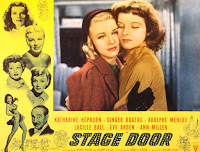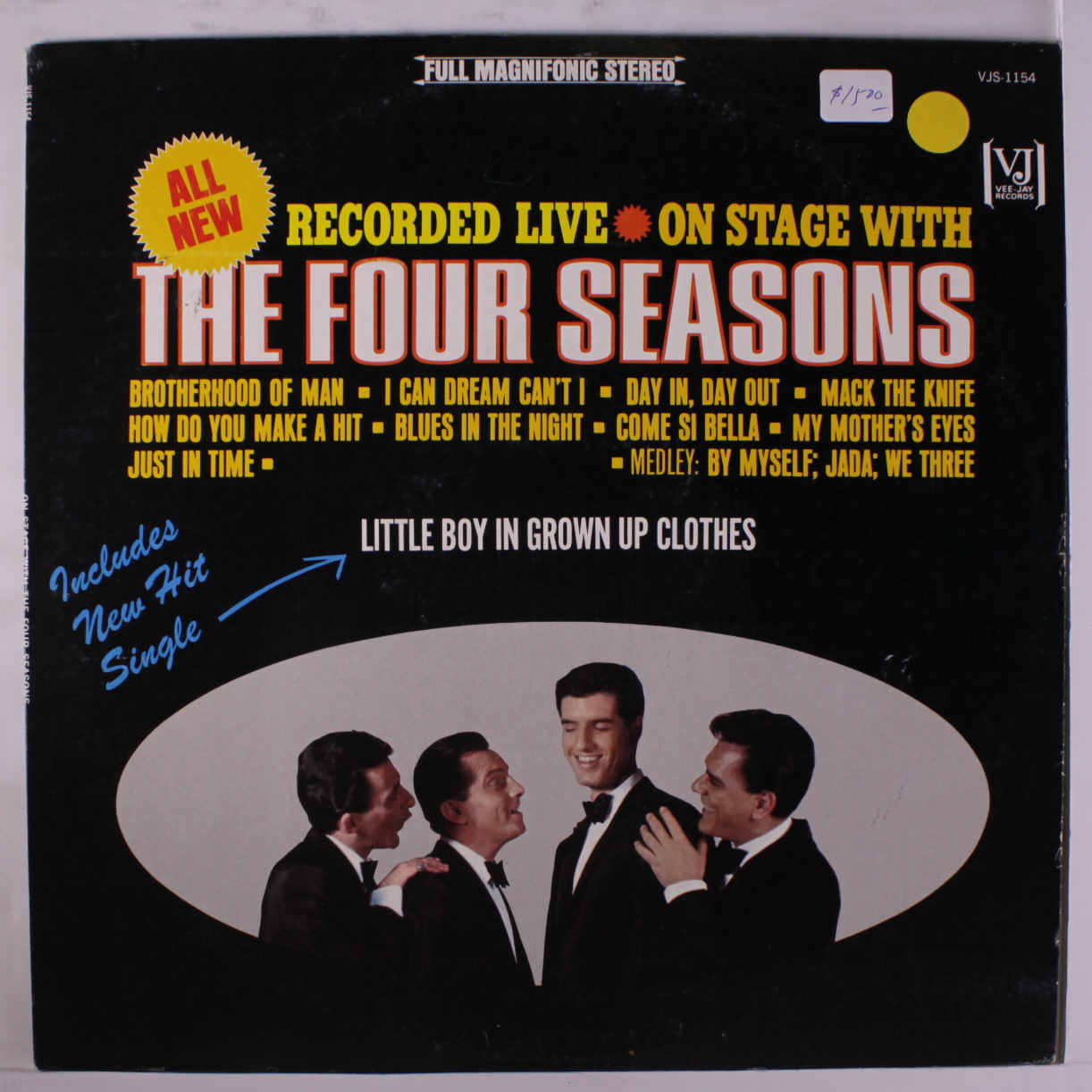(1922-44)
Wikipedia Page

It was one of the most successful short subject series in the history of film. Yet few people these days are familiar with the correct name, even though some of the characters are still a part of popular culture even today.
You probably know it as
The Little Rascals, and think of the adventures of Spanky, Alfalfa, Buckwheat, and Darla. But, other than Spanky, they came on at the tail end of the series, when it was not at its best.
The concept was invented by comedy producer Hal Roach in the silent days. He conceived of a series of films showing kids acting like kids. Direct Robert F. McGowan insisted that the children not look like actors and that they not use makeup* or anything that made them seem like cute Hollywood children. Gags were written, and the kids were allowed to ad lib and act as naturally as possible.
Another innovation (at least in the beginning) was to change the cast as the kids got older. People would be introduced slowly for an episode or two. If there was a positive response from audiences, they continued. If they grew too old for the role, they were gone, often replaced as part of a nationwide talent competition. Thus there was a different cast at any given time.
The scripts were written by some of the best comedy writers of the day, including Leo McCary, Frank Capra, Walter Lantz, and Frank Tashlin. The kids – many of whom were too young to read – were coached on what to say and do, especially in the silent days when you could do it without ruining a take.
The stories were simple, telling about the minor adventures of the kids in the gang. They rambled, and the humor was gentle. the jokes slow paced. But they had a ton of charm, mostly because the kids were so natural.
Despite the turnover, several of the early actors became stars. in their own right. The most successful of these was Jackie Cooper, who left after a couple of years to star in features, and eventually was successful in TV. My favorite Cooper short was when he heard they get a new teacher – Mrs. Crabtree – and decided she was going to be old and mean and decided to play hooky. Of course, Mrs. Crabtree was young and kindly and treated the class to ice cream, which Jackie was going to miss.** A couple of other episodes showed him with a schoolboy crush on her.
In 1932, they added a three-year-old kid who became the face of the franchise: George “Spanky” McFarland. Spanky charmed the crew from his very first audition. Younger than the rest, he was teamed up with Scotty Beckett to be the best and funniest of the Gang.
A favorite moment of that era was in “Birthday Blues,” where Spanky’s parents were always fighting. It’s his mother’s birthday, and he goes out with his brother (Dickie Moore) for a present. Seeing a gun in the window, he says they should get that. His brother asks, “What would she do with a gun?” Spanky replies, “Shoot Papa.”
One aspect of the series was that it always had a Black child as one of the gang: Ernie “Sunshine Sammy” Morrison and Alan “Farina” Hoskins in the silent days and Matthew “Stymie” Beard*** and Billie “Buckwheat” Thomas when sound came in. Farina was extremely well liked and may have been the most popular Black actor of the silent days (he made the transition to sound and did a few of the early sound films). Of course, any portrayal of Blacks in Hollywood of the era is bound to show cringeworthy moments, but they were usually minor and not mean spirited, and, more importantly, the Black members of Our Gang were always accepted as equals by the rest, one of the few times during the 20s or 30s where you could portray it that way.
But by the mid-30s, things were changing. With Spanky a star, they got away from the concept of recasting when the characters got too old. Luckily, since he started young it was ok for awhile, but there was an incentive to keep him in the role as he got older. Characters were introduced that were basically single jokes. 1935 was a turning point: Gone were Scotty Beckett and Stymie, to be replaced by Carl “Alfalfa” Switzer, Darla Hood, Eugene “Porky” Lee, and Buckwheat****. In addition, a new director was brought in: Robert McGowan, who had directed most of the shorts from the beginning, was replaced by Gus Miens.
And something was lost. The stories were shorter and tighter (ten minutes instead of 20) and far more polished. The kids had evolved from Our Gang into child stars.
In 1938, seeing the market for short subjects was contracting, Roach sold
Our Gang to MGM, who had been distributing the shorts. It stuck with Spanky and the crew as long as they could, and the characters they added – Froggy, who had a frog-like voice; and Mickey Gubitosi+ – were, at best, one-joke characters. In 1942, Spanky – now thirteen – left the series. It petered out the next year.
It might have been completely forgotten, except that Roach, who kept ownership of the early shorts, saw money in selling them to television. The only problem was that MGM had the rights to the name “Our Gang.” So Roach renamed the series “The Little Rascals” and they became a mainstay for kid’s TV into the 60s.++
220 “Our Gang” Shorts were made, over 125 once sound came in, making it the most prolific of the short subjects of the era.
After their stint as part of Our Gang, some of the kids went on to other roles. In addition to Cooper and Blake, Scotty Beckett, Dickie Moore, and Matthew Beard. Tommy “Butch” Bond was the first actor to portray Jimmy Olson on screen. Mickey Daniels and Mary Kornman from the silent days ended up starring in another Roach short subject,
The Boy Friends in the 30s. Spanky, alas, was too typecast and could not find much acting work.
But there was also a lot of dark stories from the actors’ later lives – alcoholism, drug addiction, suicide. There is talk of a curse, and though some is coincidence, there was what seemed to be an inordinate number of sad stories and sad ends to the various actors.
Still, from the beginning,
Our Gang was a treasure and popular bit of entertainment for over 40 years.
_________________________________________________________
* The only sign of makeup was a circle drawn around Pete the Pup (the neighborhood dog), giving him the appearance that Target appropriated
**Edna Krabappel from
The Simpsons was named in homage.
***He was always a favorite of mine, with his shaven head and bowler hat (given to him by Roach star Stan Laurel). He also was shown as the clever guy of the gang, though sometimes too clever for his own good. He often got the best lines.
****Buckwheat was added a year earlier as Stymie’s younger sister. No, that’s not a typo.
+Who changed his name to Robert Blake and found stardom and, eventually, infamy.
++The series was always billed as “Our Gang,” but some titles would say “with Hal Roach’s Rascals,” hence the name.
 The Christmas season is inundated with specials. Which are good from the point of view of the network that commissioned them. You can trot them out every year and get an audience big enough to make them worthwhile. It’s unusual for a special to have only one or two broadcasts, and especially strange when the show is as good as How Murray Saved Christmas.*
The Christmas season is inundated with specials. Which are good from the point of view of the network that commissioned them. You can trot them out every year and get an audience big enough to make them worthwhile. It’s unusual for a special to have only one or two broadcasts, and especially strange when the show is as good as How Murray Saved Christmas.*








 (1957-60)
(1957-60) (1958-60)
(1958-60)




.jpg/220px-Moondog_(1969_Moondog_album).jpg)





 (1960-62)
(1960-62)
 (1918-1997)
(1918-1997)
